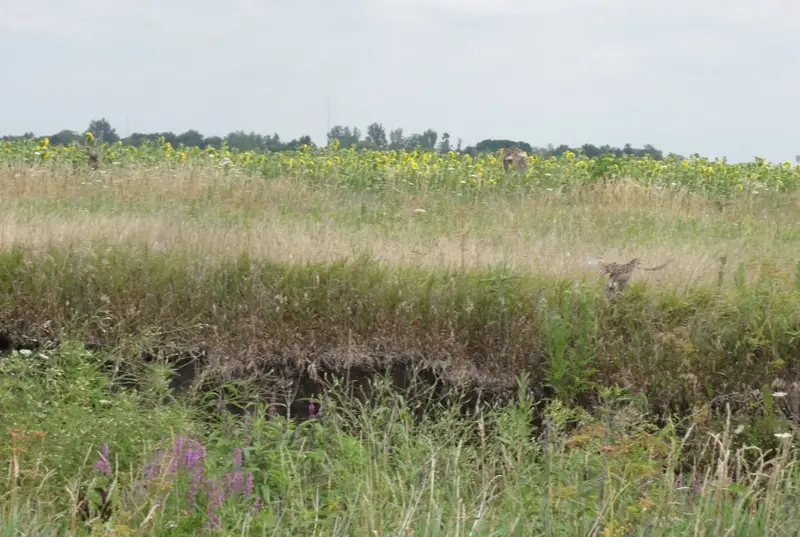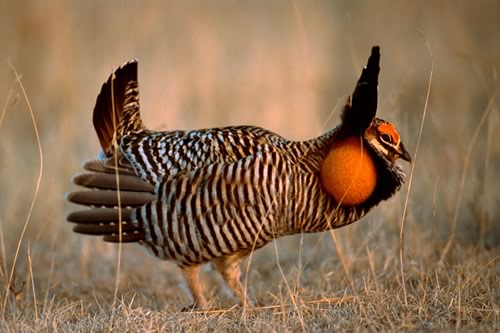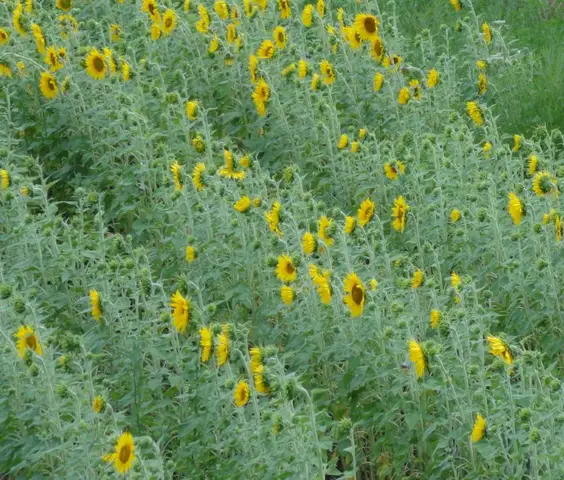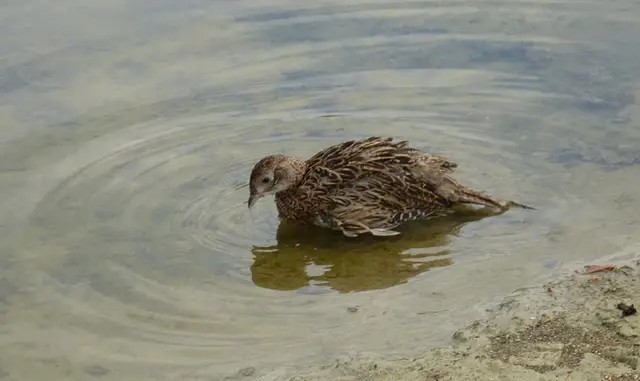


Revitalizing Wild Pheasant Populations

Revitalizing and restoring historical populations of pheasants isn't a topic discussed very often, much less in any meaningful detail. We often have a confused, dazed outlook when it comes to conservation. Mother Nature can be a very harsh caretaker, as survival of the fittest changes with the environment. Change in wildlife populations often happens simply due to the proliferation of man, roads, cities, and suburbs. Consider a nasty, stupid bird that gets some press: the California Condor. A notably vulgar bird, the California Condor became extinct because of its very poor ability to reproduce (one egg from a mated female every two years), and its propensity towards chewing on large road kill, before there were roads. The stupid condor has no sense of smell, so it tends to ignore bird and reptile carcasses. Habitat has made things tough for the condor, so bringing back the massive herds of Bison and elimination of humans would be its best hope. The condor does not have the ability to reproduce until the age of six, so it was Mother Nature who actually condemned this vulture to extinction, throwing in the dirty trick of climate changes associated with the end of the last glacial period and the extinction of the Pleistocene megafauna.

Above, the once common Prairie Chicken, photo courtesy of the Missouri Dept. of Conservation. Sunflower seeds, according to tests run by Cavan Sullivan, are the pheasant's favorite. Around for over 9000 years, native to North America, the prairie chicken is considered extirpated in Canada, when one has not been spotted since 1987. Quite a change from over a million birds in Canada alone around 1900. The prairie chicken's aversion to man-made structures has done it no favors. Missouri has launched an effort to reestablish the Prairie Chicken in recent years, with mixed results. Jasper County hosts the largest of three prairie chicken flocks still existing in Illinois, where it has all but vanished.
So it goes in Illinois, with the extinction of a native bird, the Prairie Chicken, from most of its prior range. Kansas State University researchers documented a distinct avoidance of man-made structures by prairie chickens. Generally, most prairie chicken hens avoided nesting or rearing their broods within a quarter-mile of power lines and within a third-mile of improved roads. Buildings, including a power plant and gas booster stations, were avoided from anywhere between two-thirds of a mile to one mile, depending on their size. There are negative impacts on prairie chickens of other types of structures as well, including communications towers, wind farms, and suburban homes. Fragmentation of the open grassland horizons preferred by prairie chickens seems another man-made threat to their survival. Yet, who cries for the prairie chicken, already driven to extinction in Canada? Indeed, to restore many native species of wildlife would require a severe reduction in the quantity of human life: less roads, houses, a dramatic reduction in farming, drainage, and elimination of well-populated suburbs. We don't seem to care nearly as much about the Indiana bat, the red wolf, the American crocodile, the North American cougar, the black-footed ferret, or the giant garter snake.
Cities and suburbs, power lines and roads, elimination of natural prairie in favor of growing food . . . all of these things have permanently changed the landscape and the ability of historical wildlife to inhabit it. It may not be pleasing, but most Americans aren't going to start milking their own cows, slaughtering their own hogs, or raising their own chickens anytime soon. Nor are we willing to stop burning coal or driving on roads for the sake of nature. We aren't willing to ban ownership of cats, even though cats kill over a billion birds a year in the U.S., with some estimates double that figure. You can't count on cat owners to pay for conservation, much less those who use electricity or gasoline. Hunters will and do pay, though, for no one cares more about healthy game populations than hunters.
Just releasing pen-raised birds is fruitless as they are clueless how to forage, weatherproof themselves by using their preen gland, or hide. It begins with the fundamentals of habitat. Water, food, nesting area, cover from predators. Every bit helps, but prior to attempting to help out a resident population the habitat needs to be addressed first. Cavan Sullivan of Sullivan Pheasant Farms has been at it for over fifteen years, seeking to be the Johnny Appleseed of pheasants. There was of course, a very real Johnny Appleseed, John Chapman, who introduced apple trees throughout Pennsylvania, Ohio, Indiana, and Illinois.

Sunflower seeds, according to tests run by Cavan Sullivan, are the pheasant's favorite. Sunflowers allow for high-protein insects for young pheasants and their seeds, once dropped, do not decay. Pheasants can scratch them up in January or February for a tasty, nutritious snack.
I grew up pheasant hunting in northern Illinois, with pheasants numerous enough that dogs weren't necessary. Corn was planted with rows wide enough apart that walking standing corn wasn't a problem. Wondrous orchards, sloughs, heavily grassed fence rows were commonplace. Dairy farming from small farmers wasn't unusual, with the pastures and hayfields that naturally supported it. We had a brutal winter all the way back in 1979, the “Blizzard of '79” along with a couple of other severe winters that were rough on pheasants. While still good in areas, they have never completely recovered from the big winter kill years and the rise in raptor populations combined with habitat loss has combined to stress local populations.

The pen-raised bird, raised to maturity, is a weak, light, clueless pheasant with no skills to survive in the wild. Void of natural curiosity, no foraging, hiding, running, or flight skills, the adult pen-raised pheasant has a survival rate of about zero. The weather-conditioned young bird, like this fellow we released (above), can already use his preen gland to waterproof his feathers.
According to Cavan Sullivan:
“Ringneck Pheasants have captivated the attention of millions of sportsmen and woman for all walks of life. For many the crisp sound of a cackling rooster brings to mind an annul pilgrimage to the hedges and tall grass prairies specking the Midwest. Unfortunately for many this tradition passed from father to son over the last 3 generations is becoming less and less available. Pheasant and other game bird populations have witnessed one of the largest declines of any bird species in North America, as reported by the North American Ornithological Society.
Reasons behind this downturn are many, and solutions are not always easy or inexpensive. Habitat loss is by most experts the largest problem effecting the once thriving pheasant populations. That coupled with an over abundance of predators, and extra efficient harvesting equipment pheasants and other game birds have the survival odds stacked against them. Over the last 10 or so years landowners have made great strides in restoring damaged and destroyed habitats, and with government subsidized land set aside programs such as CRP, and CP-33. Thousands of acres of “crop field edge” have been restored to suitable pheasant habitat. If you are reading this, and you fall into the group who took on the challenge to redevelop lost habitat I congratulate you on taking the first and biggest step to having your own sustainable pheasant population. However, for many property owners increased bird numbers has not followed even the best restoration efforts. Pheasants like many animals rely of different habitats for different aspects of their life cycle, and the recourses necessary to survive during one season doesn’t necessarily mean they will have their requirements met during other times of the year.”
Cavan goes on to list five primary considerations to be mindful of, potential problems to avoid, so that your revitalization efforts can be as successful as possible.
Failure
to honestly assess the quality of habitat available to birds for their
entire life cycle.
Just because you are accustomed to flushing roosters from tall switch
grass does not mean this can provide them with all their necessary requirements.
Pheasants need a variety of habitat types in order to thrive.
Food
resources are only seasonally available, and when in most demand are greatly
reduced.
In
most agriculture areas the availability of food from the months of April
through October is nearly unlimited. However, during the cold and long
winter months when energy usage sores, many habitats are turned into a
desert of black dirt due to fall tillage practices.
Water!
Water! Water!
Pheasants like all animals need fresh water daily, without a safe and
available place to drink even the very best properties will have severely
reduced bird numbers. During the winter months this is less critical especially
when snow is present, as the birds are quite adapted to eating the snow
for their necessary moisture.
Failure
to stock enough birds of the proper age for optimal survival.
Successfully stocking pheasants is a numbers game. In a wild situation
with great habitat expected survival rates of a pheasant chick through
its first birthday is about 30%. With released birds 20% survival of your
stocked generation is a good starting point. Assuming you released 100
young captive bred birds the following year you could expect to have about
20 individuals make it to their first breeding season. Assuming that half
those birds are female, and that only half of their nests will be successful.
A best-case scenario would be that 5 hens would successfully hatch out
a clutch of about 10-15 chicks for a total of 50-75 chicks to go into
the next year's breeding pool. It is generally recommended that a stocking
effort be planned in 5-year cycles, and a minimum of 100 birds should
be released each year for 5 years fully establish a population given that
all the habitat requirements are being met. Adult birds raised in captivity
make a poor choice for release if your true intention is to establish
a population. Adult birds are accustomed to being cared for and have lost
many of their natural abilities to survive and avoid predators. Young
birds (6-7 weeks) are naturally curious, quickly learn to forage, and
scramble for cover should a predator threaten them.
Birds used in the stocking effort were not properly conditioned
prior to release, or were from an inbred flock.
In the wild pheasants generally are not able to completely self-regulate
their body temperature until the age of 5 weeks. Before this age they
need an external heat source to stay warm. They must also be trained to
use their uropygial (preen) gland to protect their feathers from becoming
water logged from rain and dew. To do this starting at 3 weeks of age
birds must misted off with water 2-3 times per week. While they look similar
phenotypically, genetically pheasant can be very different. Some strains
have been bred for meat, and others have been bred for specific color
patterns. When choosing abreeder to purchase stocker birds from make sure
they have clean facilities, and healthy breeding stock that resembles
what wild birds should look like. Remember just because
someone says “direct China import” or “wild type”
does not mean anything.
For more information about Sullivan Pheasant Farms and what they have to offer, see their website: http://www.sullivanpheasantfarm.com/home.html or give them a call at 217-632-7597.
Copyright 2012 by Randy Wakeman. All Rights Reserved.




